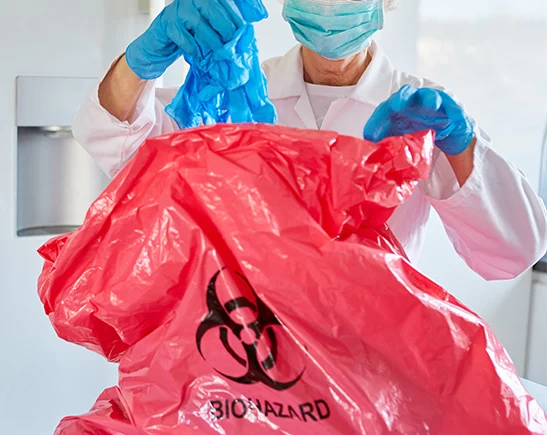Checking Out Different Garbage Disposal Options for a Cleaner Environment
In the pursuit of a cleaner atmosphere, the monitoring of waste disposal has actually become a vital centerpiece for sustainable growth. With a wide variety of waste disposal choices readily available, ranging from typical land fill approaches to ingenious waste-to-energy modern technologies, the choice of how we manage our waste has significant ramifications for our world's wellness. By taking a look at the various techniques and methods utilized in reusing, composting, incineration, land fill monitoring, and waste-to-energy processes, a deeper understanding of their effects and efficiency can be gotten. The mission for ideal garbage disposal approaches that focus on environmental preservation while satisfying the demands of a growing populace continues to be a pressing concern in today's globe.
Recycling Methods
Applying efficient recycling techniques is important in lessening waste and advertising sustainability in our environment. Recycling involves the process of converting waste products right into reusable things to avoid unneeded disposal.
Another important recycling approach is composting, which involves disintegrating natural waste like food scraps and yard trimmings into nutrient-rich dirt. This process not just diverts natural waste from garbage dumps however also creates a useful source for gardening and agriculture. Additionally, upcycling is an innovative recycling method that includes transforming old or discarded products into items of better or worth. By incorporating these numerous recycling techniques into our waste management techniques, we can substantially minimize our environmental impact and relocate in the direction of a more lasting future.

Composting Techniques
Efficient waste administration practices, such as reusing techniques, pave the means for a cleaner atmosphere, and now, changing the focus to 'Composting Techniques', we explore lasting ways to decay organic waste for environmental advantage. medical waste removal near me.
Composting is a natural process that changes natural waste, like food scraps and backyard trimmings, into a nutrient-rich dirt modification. The key to effective composting hinges on producing the appropriate balance of environment-friendly products, such as vegetables and fruit scraps, and brownish products, like dried twigs and fallen leaves. These products decay with the aid of bacteria, damaging down the waste right into important garden compost.
Standard backyard composting includes layering natural products in a container or pile and regularly transforming the mix to aerate it. By utilizing composting techniques, we can lower the amount of waste sent out to landfills while developing a helpful item for enhancing dirt and sustaining plant development.
Incineration Disadvantages and pros
Incineration, as a waste disposal approach, offers both advantages and disadvantages that warrant careful factor to consider in the world of lasting waste monitoring techniques. On the silver lining, incineration can dramatically lower the volume of waste, minimizing the need for landfill space and potentially decreasing greenhouse gas exhausts. Incineration additionally enables the recuperation of energy via the generation of electrical energy or warmth, contributing to source recovery. Moreover, the process can be made use of to damage harmful read this substances, offering a secure method for managing specific types of waste that might present risks to public health and wellness and the atmosphere if left neglected.
In addition, the high first investment and functional costs of incineration centers pose financial obstacles, making it a less cost-efficient choice compared to various other waste monitoring techniques. Cautious surveillance and policy are important to minimize these negative impacts and maximize the benefits of incineration as component of an extensive waste management technique.
Garbage Dump Management Techniques
Garbage dumps play a critical role in waste monitoring and ecological preservation by providing a containment system for the disposal of solid waste materials. Effective landfill monitoring approaches are necessary to alleviate ecological influences and ensure the long-lasting sustainability of these garbage disposal sites. One vital strategy appertains waste compaction to make the most of making use of offered space within the garbage dump (click here). By condensing the waste, the quantity is reduced, allowing for more waste to be fit in time.
In addition, the application of daily cover techniques is crucial in lessening odors, preventing trash, and reducing the destination of insects. Treatment the disposed waste at the end of each day aids to include smells and prevent possible environmental contamination. Furthermore, the surveillance of garbage dump gas emissions and leachate degrees is important in ensuring that ecological criteria are satisfied which any kind of potential threats to bordering communities are decreased.

Waste-to-Energy Technologies
One of the ingenious approaches to lose monitoring includes using Waste-to-Energy modern technologies to convert solid waste into useful power resources. Waste-to-Energy (WtE) modern technologies encompass a variety of processes that aim to draw out power from waste products with thermal, chemical, or biological methods. This conversion process not only reduces the quantity of waste that winds up in land fills however additionally generates important power sources such as electrical energy, warm, or biofuels.
There are numerous techniques of Waste-to-Energy conversion, including pyrolysis, incineration, and gasification. Incineration involves shedding waste at high temperatures to create warmth and power. Gasification transforms waste right into a syngas, which can be utilized for power generation or chemical production. Pyrolysis breaks down natural products utilizing high temperatures in the lack of oxygen, generating bio-oil, char, and gas.
Executing Waste-to-Energy technologies can help mitigate ecological problems connected with traditional waste disposal methods while simultaneously supplying a renewable resource resource. Cautious consideration needs to be provided to exhausts control and ensuring the sustainability of feedstock materials for these technologies to be really valuable for a cleaner environment.

Final Thought
Finally, exploring different garbage disposal alternatives such as recycling, composting, incineration, landfill administration, and waste-to-energy technologies is vital for advertising a cleaner environment - click here. Each method has its own advantages and difficulties, however by making use of a mix of these methods, we can work towards reducing the amount of waste that finishes up in landfills and eventually add to a more lasting future for generations ahead
With a plethora of waste disposal alternatives offered, ranging from typical land fill methods to cutting-edge waste-to-energy technologies, the selection of just how we manage our waste has far-reaching effects for our earth's health. medical waste removal service.Incineration, as a waste disposal approach, offers both benefits and downsides that warrant careful factor to consider in the realm of sustainable waste management techniques.Land fills play a crucial duty in waste monitoring and ecological preservation by offering a containment system for the disposal of strong waste products. By condensing the waste, the quantity is decreased, permitting for more waste to be fit over time
One of the cutting-edge strategies to squander management involves taking advantage of Waste-to-Energy innovations to convert solid waste into useful power resources.